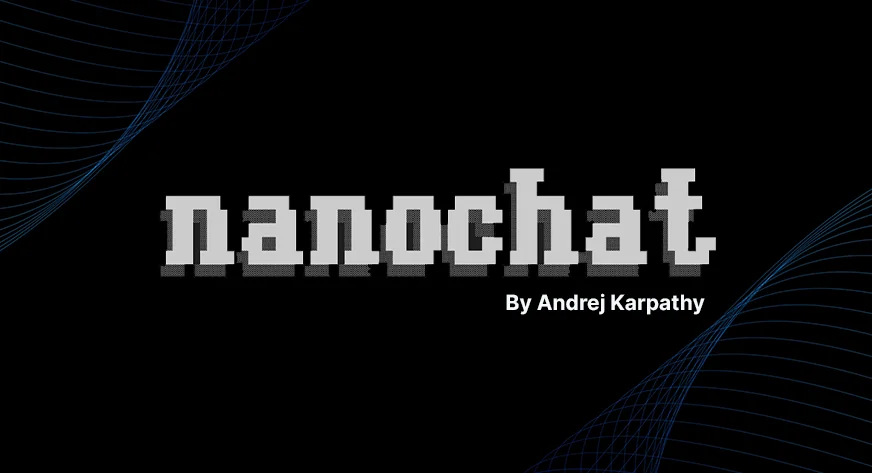Nanochat: Andrew Karpathy's Minimalist Approach to Building Affordable AI Chat Systems
Andrew Karpathy's Nanochat project demonstrates how to build a functional ChatGPT-like system for under $100, emphasizing simplicity and efficiency in AI development without unnecessary complexity.

Nanochat: Democratizing AI Chat Development
Andrew Karpathy, the renowned AI researcher and former Tesla AI director, has unveiled Nanochat—a lean, practical project that challenges the assumption that building advanced chat systems requires massive computational resources and complex infrastructure. The project's tagline, "The best ChatGPT that $100 can buy," encapsulates its core philosophy: delivering functional AI chat capabilities through deliberate simplification and cost-conscious engineering.
Nanochat represents a significant departure from the resource-intensive approaches that dominate modern AI development. Rather than pursuing state-of-the-art performance metrics, Karpathy's project prioritizes accessibility and clarity, making it an invaluable resource for developers and researchers seeking to understand how chat systems function without the overhead of enterprise-scale deployments.
Core Philosophy and Design Principles
The project embodies several key design principles that distinguish it from conventional AI chat implementations:
- Minimalism First: Nanochat strips away unnecessary abstractions and dependencies, focusing on core functionality that matters
- Cost Efficiency: Designed to operate within a $100 budget constraint, making it accessible to individual developers and small teams
- Educational Value: The codebase serves as a learning resource, with clear implementations that illuminate how modern chat systems work
- Practical Constraints: Working within resource limitations forces thoughtful engineering decisions that often yield more elegant solutions
Technical Architecture and Implementation
Nanochat's architecture reflects Karpathy's philosophy of building systems that are both understandable and functional. Rather than relying on massive pre-trained models or complex orchestration frameworks, the project demonstrates how to construct a working chat system through careful component selection and integration.
The implementation emphasizes transparency in its approach to model integration, data handling, and inference optimization. By maintaining a relatively small codebase, Nanochat allows developers to trace execution paths and understand exactly how inputs transform into outputs—a crucial advantage for learning and debugging.
Implications for AI Development
The Nanochat project carries broader implications for how the AI community approaches system design:
Accessibility: By proving that functional chat systems don't require massive budgets, Nanochat lowers barriers to entry for researchers and developers in resource-constrained environments.
Efficiency Focus: The project challenges the industry's tendency toward over-engineering, suggesting that many capabilities can be achieved through thoughtful design rather than raw computational power.
Educational Impact: Karpathy's work provides a reference implementation that clarifies how modern chat systems function, serving as a valuable teaching tool for AI practitioners.
Practical Applications
Nanochat's $100 budget constraint isn't merely a marketing angle—it reflects genuine utility for specific use cases. Developers can deploy the system on modest hardware, integrate it into local applications, or use it as a foundation for custom chat implementations. The project proves particularly valuable for:
- Prototyping chat-based features without significant infrastructure investment
- Educational demonstrations of AI system architecture
- Building domain-specific chat applications with controlled scope
- Exploring inference optimization techniques
Looking Forward
Nanochat exemplifies a growing recognition within the AI community that not every application requires cutting-edge models or unlimited computational resources. Karpathy's project suggests a future where AI capabilities become increasingly democratized, with developers able to build sophisticated systems through intelligent engineering rather than brute-force scaling.
The project's emphasis on simplicity and cost-consciousness offers a counterweight to the prevailing narrative of ever-larger models and ever-greater computational demands. For teams and individuals seeking to build practical AI chat systems, Nanochat provides both a working implementation and a philosophical framework for approaching AI development with intentionality and restraint.
Key Sources
- GitHub - karpathy/nanochat: The official repository containing the complete implementation and documentation
- Andrew Karpathy's Technical Work: Karpathy's track record in AI research and systems design, including his tenure at Tesla and previous educational contributions to the AI community



